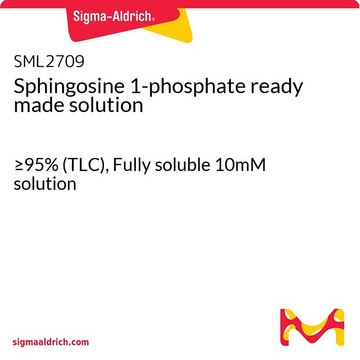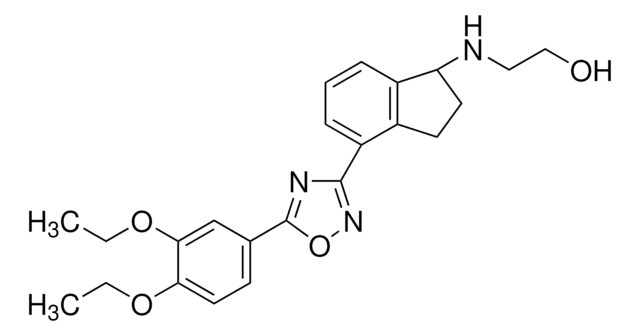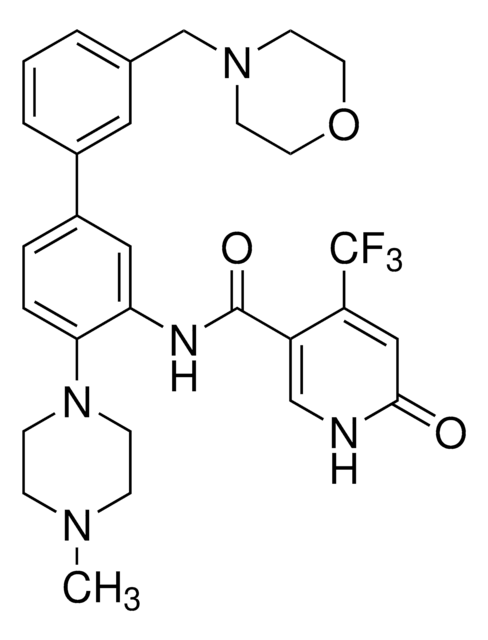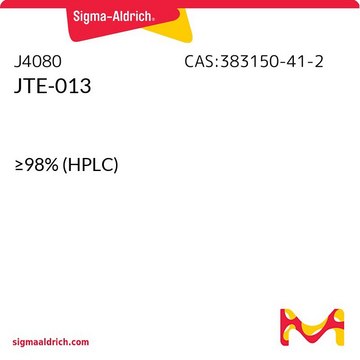Key Documents
S3944
SEW2871
≥98% (HPLC), solid
Synonim(y):
5-[4-Phenyl-5-(trifluoromethyl)-2-thienyl]-3-[3-(trifluoromethyl)phenyl]- 1,2,4-oxadiazole
About This Item
Polecane produkty
Poziom jakości
Próba
≥98% (HPLC)
Postać
solid
warunki przechowywania
protect from light
kolor
white
mp
94.5-95.3 °C
rozpuszczalność
DMSO: ≥10 mg/mL
H2O: insoluble
temp. przechowywania
2-8°C
ciąg SMILES
FC(F)(F)c1cccc(c1)-c2noc(n2)-c3cc(-c4ccccc4)c(s3)C(F)(F)F
InChI
1S/C20H10F6N2OS/c21-19(22,23)13-8-4-7-12(9-13)17-27-18(29-28-17)15-10-14(11-5-2-1-3-6-11)16(30-15)20(24,25)26/h1-10H
Klucz InChI
OYMNPJXKQVTQTR-UHFFFAOYSA-N
informacje o genach
human ... S1PR1(1901) , S1PR2(9294) , S1PR3(1903) , S1PR4(8698) , S1PR5(53637)
Zastosowanie
Działania biochem./fizjol.
Cechy i korzyści
Opakowanie
Kod klasy składowania
6.1C - Combustible acute toxic Cat.3 / toxic compounds or compounds which causing chronic effects
Klasa zagrożenia wodnego (WGK)
WGK 3
Środki ochrony indywidualnej
Eyeshields, Faceshields, Gloves, type P2 (EN 143) respirator cartridges
Certyfikaty analizy (CoA)
Poszukaj Certyfikaty analizy (CoA), wpisując numer partii/serii produktów. Numery serii i partii można znaleźć na etykiecie produktu po słowach „seria” lub „partia”.
Masz już ten produkt?
Dokumenty związane z niedawno zakupionymi produktami zostały zamieszczone w Bibliotece dokumentów.
Klienci oglądali również te produkty
Nasz zespół naukowców ma doświadczenie we wszystkich obszarach badań, w tym w naukach przyrodniczych, materiałoznawstwie, syntezie chemicznej, chromatografii, analityce i wielu innych dziedzinach.
Skontaktuj się z zespołem ds. pomocy technicznej








